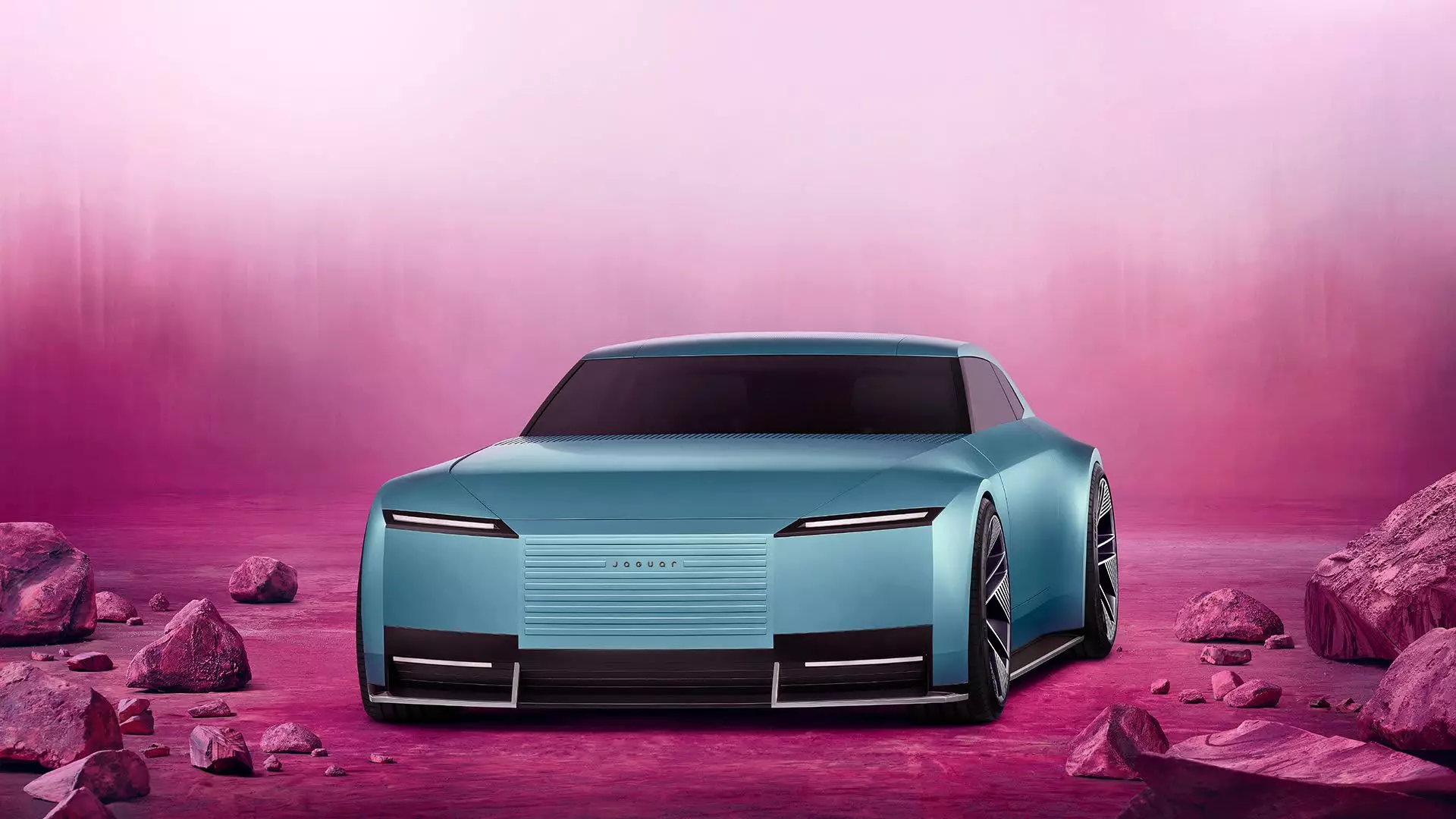On a recent evening, British automotive legend Jaguar unveiled an audacious leap into the electric vehicle market with the “Type 00”, a concept car that signals a potential transformation in their design ethos. This bold endeavor encapsulates the manufacturer’s aspiration to redefine itself in an era overwhelmingly dominated by sustainability and innovation. However, the Type 00, pronounced “Type Zero Zero”, raises pertinent questions about aesthetic choices and the implications of such a drastic shift for a heritage brand steeped in tradition.
The design of the Type 00 stands out with its unconventional, boxy silhouette paired with sleek lighting and oversized wheels. This is a marked deviation from Jaguar’s historical sporty design cues that have long been the hallmark of their saloons and SUVs. While the strategy behind a radical redesign may be to captivate a new audience, it may alienate longtime enthusiasts who are loyal to the brand’s established visual language. The risk lies in whether this design, which many may consider gaudy, will resonate with a demographic that values the historic elegance associated with Jaguar.
Automakers often use concept vehicles as a litmus test for assessing consumer interest in innovative designs and technology. These prototypes, however, are rarely intended for public sale; rather, they illuminate the manufacturer’s future ambitions. Jaguar’s decision to go electric is indicative of an industry trend where numerous carmakers are pivoting to electric-only lineups. The Type 00 is not merely a showpiece; it’s a declaration of intent that places Jaguar within the competitive landscape of EVs, alongside industry giants with more established electric offerings.
Anticipation surrounds upcoming production vehicles inspired by the Type 00, including a four-door GT car slated for next year. Notably, Jaguar projects an impressive range of up to 430 miles on a single charge for these future models, with rapid charging capabilities allowing for 200 additional miles in just 15 minutes. This optimistic projection positions Jaguar as a strong contender as consumers increasingly demand longer ranges and quicker charging times. However, balancing ambition with consumer expectations can be a precarious endeavor, particularly for a brand under scrutiny in a highly competitive market.
The introduction of the Type 00 follows closely on the heels of Jaguar’s controversial rebranding campaign, which took an unconventional route by emphasizing colourful, abstract visuals over traditional automotive imagery. The promotional video, featuring diverse models and emphasizing the message “Copy Nothing,” has sparked extensive discussion and critical feedback on social media, predominantly scrutinizing the omission of vehicles from the campaign. Critics decried the decision to strip the company’s classic jaguar logo, a symbol of the brand’s identity since the 1950s.
Jaguar’s management defended the rebranding efforts, describing them as “a bold and imaginative reinvention.” Yet, this defense has been met with skepticism. The criticism illuminates the challenge of navigating contemporary sensibilities while remaining true to the core essence of a brand. Can Jaguar risk abandoning its heritage in search of a new identity, or is there a path to innovate while respecting its illustrious past?
As the automotive industry accelerates its transition toward electrification, Jaguar’s decision to halt all new car sales in the U.K. marks a strategic pivot toward an exclusively electric future by 2026. This shift is emblematic of a larger curricular change in the automotive business as automakers strive to embrace sustainability amidst changing consumer preferences. However, launching a comprehensive overhaul of Jaguar’s operations comes with formidable challenges.
Many manufacturers have pledged to transition to electric vehicles but have faltered in the face of sluggish adoption rates. For Jaguar, re-establishing itself in a new price bracket will necessitate unconventional thinking and strategies that break away from traditional automotive norms. According to Rawdon Glover, managing director of Jaguar, this is a necessary evolution: “We need to re-establish our brand and at a completely different price point so we need to act differently.”
Jaguar’s foray into electric concepts through the Type 00 heralds a moment of both risk and opportunity. As the company strives to rescale and redefine itself amidst evolving consumer demands, it must carefully balance innovation with a respect for its storied legacy. The jury is still out on whether this gamble will pay off, but one thing is certain: the automotive world will be watching closely as Jaguar attempts to navigate its path forward in a rapidly transforming landscape.

